Sitting in the middle of San Francisco Bay, just a couple of kilometres from the shore, is one of the most notorious islands in US history: Alcatraz. The very name invokes dread imagery, a reputation forged on the backs of notorious criminals, impregnable walls, and Hollywood drama. Yet behind the hype, "The Rock" has a storied history beyond its time as a prison. I visited in early February, taking a night tour of the island.

Alcatraz Cruises is the company in charge of tours to Alcatraz. They work with the federal National Parks Service in providing access to the island, and the tours are very reasonably priced at around thirty dollars. There are day and night tours available; the night tour leaves San Francisco around 4:30pm, and as you approach the ferry encircles the island to reach its pier, giving you a spectacular view. A brief commentary about the island's history plays out as you cross the Bay and dock. Then, as you arrive, you are sectioned off into groups with a tour guide, who walks you up the hill toward the main prison buildings. The walk is punctuated by several stops explaining the significance of buildings, artefacts, and other locations on the climb.
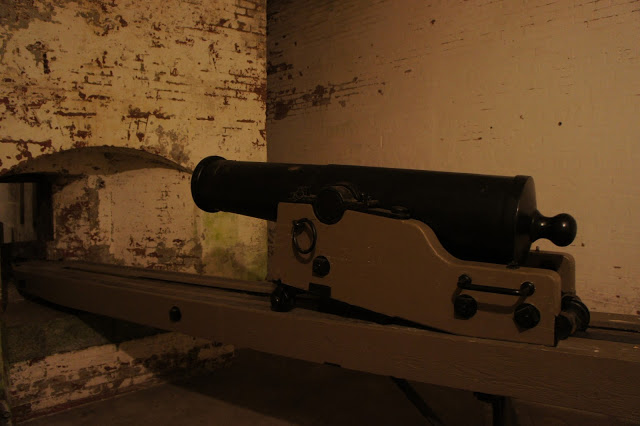
Alcatraz was initially used as a military garrison and prison by the US Army during the American civil war - nearly 100 years before it became a federal prison. The walk up the hill passes the old fortifications on the island; it was once home to hundreds of cannons that defended the vitally important port of San Francisco in the 1800s. The cannons on the island were never fired in anger, and today a few remain preserved on the island.
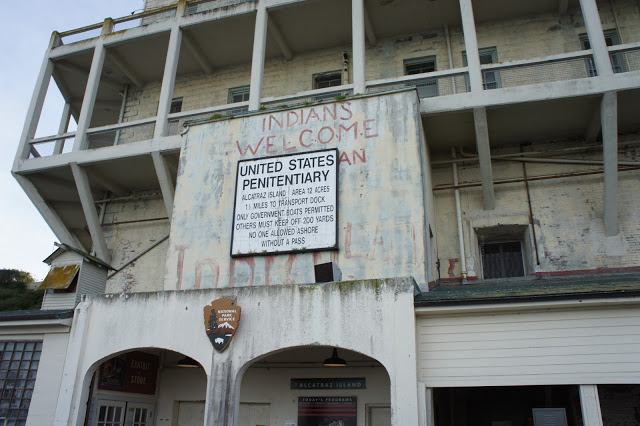
In 1933, control of the facility was transferred to the Federal Bureau of Prisons. It was converted island into a maximum security jail - an inescapable fortress that would hold the troublemakers from other prisons. Alcatraz was where you were sent if you misbehaved in another institution - the Rock invitingly close to San Francisco, but surrounded by the icy cold waters of the Bay. Alcatraz was ordered closed as a prison in 1963 due to severe degradation of the buildings, and high running costs (triple that of other prisons). Following its closure, the island was taken over as a protest ground against the government by Native American activists (hence the Indians welcome graffiti in the above picture). The activists stayed for nearly two years before the federal government eased policies designed to end the recognition of Native American tribes and their ancestral lands. This paved the way for the designation of the island as a National Park.
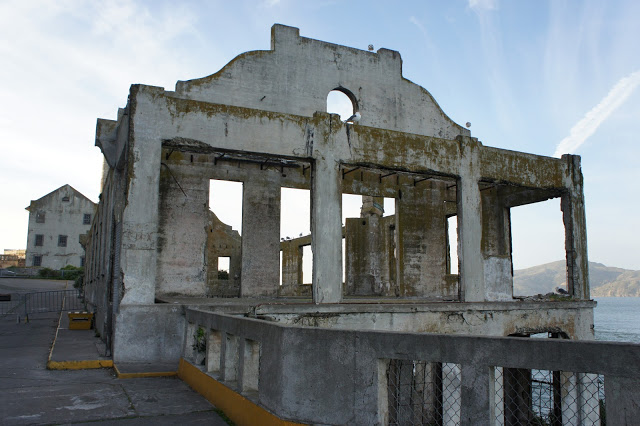
Alcatraz Prison is famed for the many escape plans conceived and attempted from the island. The prison officially claims that no prisoner has successfully escaped; out of the 36 inmates who attempted escapes, all but five were recaptured or killed. The remaining five are missing, presumed drowned. Our guide shared the meticulously planned 1945 escape attempt of John Giles, who was assigned to work on the docks during his incarceration. He had gradually stolen all of the components of a US Army staff sergeant uniform over several years. One day, when the prison launch pulled up to the dock, Giles donned the stolen uniform and boarded the boat, successfully making it off the island. Unfortunately, he was quickly discovered to be missing, and was met at the boat's destination by prison officers who escorted him back to the prison.
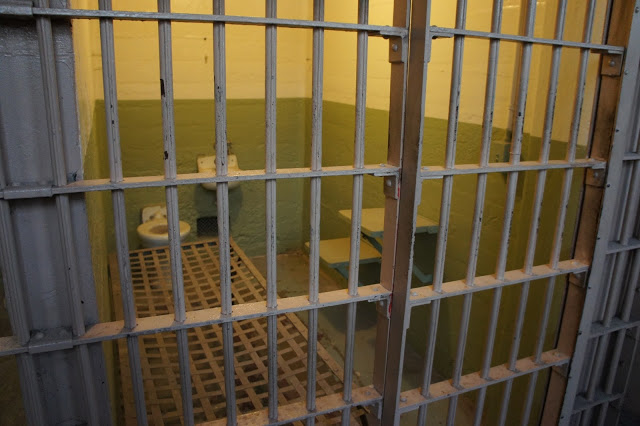
At the top of the hill we were ushered into the main prison block building, and supplied with a complimentary audio tour. The tour is narrated by former inmates and guards of the penitentiary, and walks you through the block, talking about life in the prison. The grim conditions in the prison were espoused by the rules and regulations: "You are entitled to food, clothing, shelter and medical attention. Anything else that you get is a privilege. You earn your privileges by conducting yourself properly." The tiny cells housed the worst criminals of the American prison system
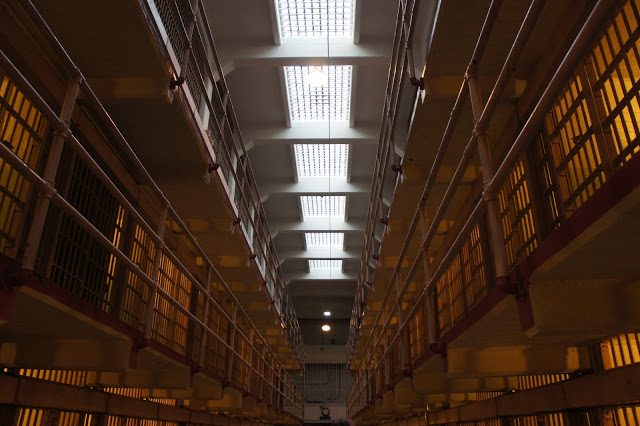
The Battle of Alcatraz in May 1946 was the result of the most violent escape attempt from the prison. Two inmates overpowered a guard and used his keys to release two more inmates from their cells. They used an improvised bar-spreading device to widen the iron bars protecting a gun store; one of the inmates had starved himself in the leadup to the escape attempt in order to fit through. Now armed, the would-be escapees intended to locate the key to the prison yard door, allowing them to make their way to the dock, seize the prison launch boat, and make their way to the shore and freedom. Unfortunately, the lock jammed due to their repeated attempts to open it, and the inmates were trapped in the prison block, along with several guards whom they had taken as hostages. The missing guards were noted and the escapees discovered, trapped in the main cellhouse. Platoons of Marines were called in, and so began a three day standoff punctuated by intensive gunfire, grenade attacks, and mortar assaults. By the end, two guards and three inmates were dead, and a further two inmates would be executed for their role in the battle.
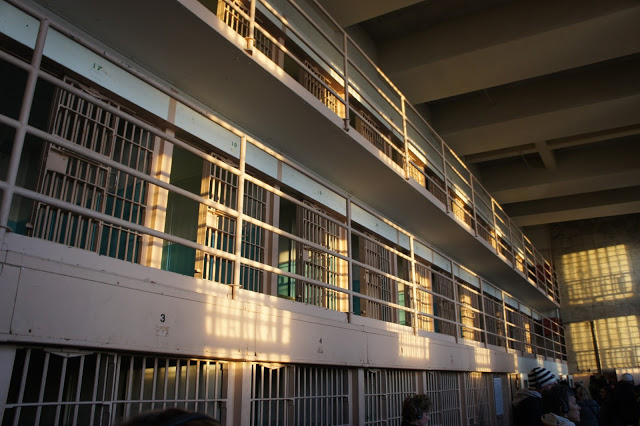
The most intricate escape attempt from Alcatraz came in June 1962. Frank Morris, Clarence Anglin, and John Anglin discovered that behind their cells was an unused service corridor. They spent a year digging holes in their cell walls using spoons, covering the noise with accordion playing and concealing their progress with false walls. As this was progressing, they removed the rivets from an air vent at the top of the service corridor (substituting soap for any guards who cared to check), and stole raincoats and ropes to fashion a makeshift raft hidden under sheets on the prison roof. They also fashioned paper-mache dummy heads, furnishing them with real hair stolen from the prison barber shop. On the night of the escape, the inmates arranged pillows on their beds, and placed the heads at the top. They crawled out through the holes, and climbed up the service corridor, through the air vent to the roof. Scaling a fence and dodging spotlights and patrols, the trio made their way to the shore, where they pushed off the island and started paddling. It was approximately 10pm, June 11th, 1962.
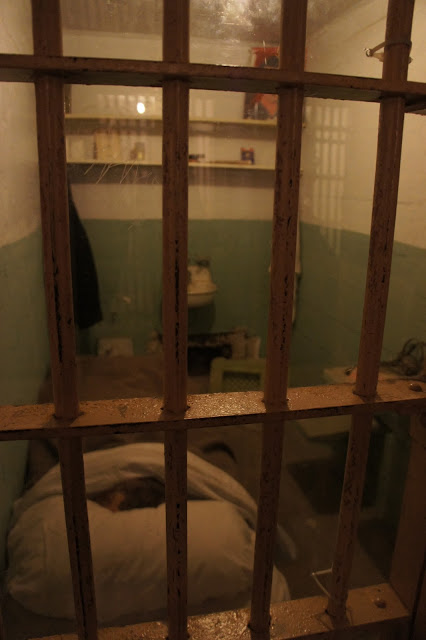
Morris and the Anglin brothers were never seen again. When their absence was discovered the following morning, Alcatraz and nearby Angel Island were searched in vain; while remnants of the raft, paddles, and personal items were found on Angel Island, the men had vanished. Officially, the FBI concluded after a 17 year investigation that the men had drowned in the Bay. But there are still some who believe that the inmates survived and made it to the shore, and conspiracy theories abound regarding stolen vehicles, organised rendezvouses, mysterious Christmas cards, and strangers at mothers' funerals. Now, the escapees would be in their eighties, and I guess only they know what truly happened.
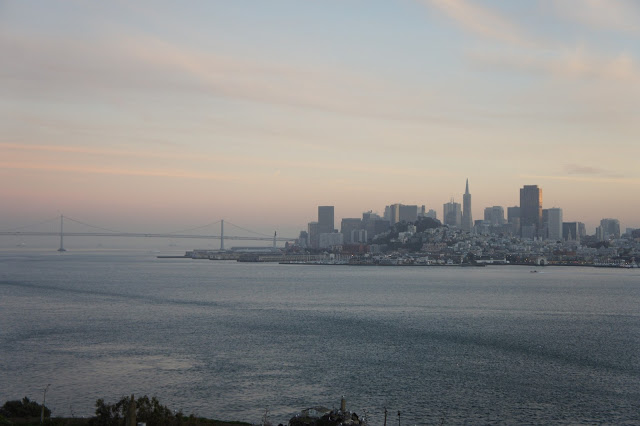
Alcatraz affords some spectacular views of the Bay and San Francisco. My inner photography geek was captivated by the late afternoon scenery of the city and the Golden Gate Bridge, and I took some time with the audio tour on pause to snap some shots. It would have been excruciating as a prisoner to see the city so close, yet so far out of reach.
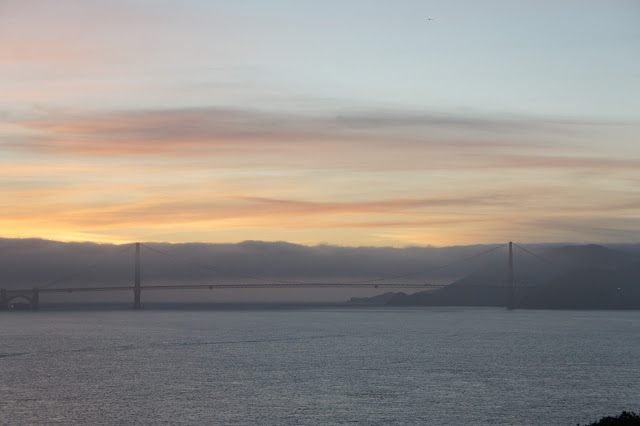
Back inside, the audio tour concludes on the ground floor of the prison, leaving you free to explore the remainder of the penitentiary. There are additional presentations and talks, as well as a gift shop on the site. Upstairs is the hospital facility, and the cell of one Robert Stroud - the famed "Birdman of Alcatraz". Stroud was a particularly violent inmate who started caring for and raising birds whilst he was imprisoned at Leavenworth. He became somewhat respected in ornithological circles, authoring two books on bird diseases and engaging in such correspondence that checking and approving his mail occupied a full-time prison secretary. Eventually Stroud was transferred to Alcatraz, where he was forbidden to keep his pets (making the Birdman name somewhat incongruous!), and spent 17 years in the Rock. Another legendary occupant of Alcatraz who spent appreciable time in the hospital was on Al "Scarface" Capone, the noted Prohibition-era gangster. Having contracted syphilis as a youth, Capone's last year in Alcatraz was spent in the hospital, confused and disoriented due to the progress of the disease. When released, he was but a shadow of his former self.

As I strolled back outside the prison, the temperature had dipped appreciably to single digits celsius. An icy wind was howling about the island - a byproduct of the freezing cold ocean no doubt - and the city of San Francisco had come alive with lights. I stayed outside as long as I could manage, taking several long-exposure shots of the city and the Golden Gate Bridge.


Coming back inside, I wandered through the old prison dining hall. In here was an interesting display on the way that former prisoners rebuild their lives upon their release. The exhibition highlighted five or six particular individuals who had been incarcerated and released, and were now working with underprivileged youths in the local area to prevent them from falling into the same traps. I thought it was a very brave thing for these people to step forward in this way, as well as offer much of their time to helping others avoid the prison system. Back in the main cell block opposite was a demonstration of the prison door locking mechanism - the distinctive screech of metal on metal before a resounding, demoralising thud of the locking doors. Apparently, many a Hollywood film has used the sound of Alcatraz's closing cell doors (including The Empire Strikes Back), making the island both inspiration for and a tool of the magic of cinema.
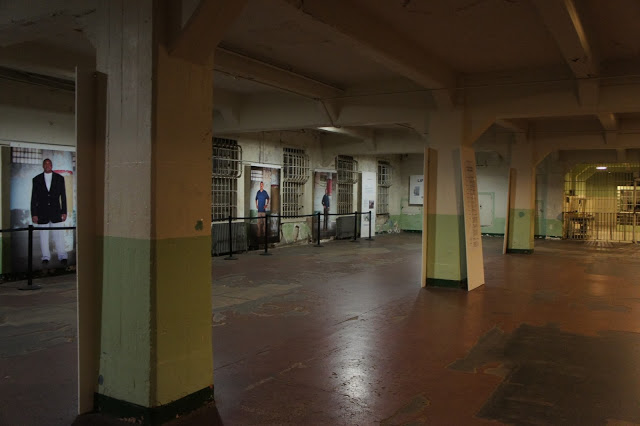
And so my trip to Alcatraz was brought to an end - while day tours to the island have a steady stream of return ferries to the mainland, the night tour has just one. It was an excellent place to visit and explore, capturing a slice of criminal side of America through the twentieth century. The views of the Bay are stunning, and the history of the Rock is a captivating one to follow.